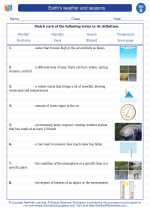Plate Boundaries
Plate boundaries are the areas where the Earth's tectonic plates meet. There are three main types of plate boundaries: convergent, divergent, and transform boundaries. Understanding plate boundaries is crucial for understanding the processes that shape the Earth's surface, such as earthquakes, volcanic activity, and mountain building.
Convergent Boundaries
Convergent boundaries occur when two tectonic plates move towards each other. There are three types of convergent boundaries: oceanic-continental, oceanic-oceanic, and continental-continental. At these boundaries, one plate is forced beneath the other in a process called subduction, leading to the formation of mountain ranges and deep ocean trenches.
Divergent Boundaries
Divergent boundaries occur when two tectonic plates move away from each other. This process results in the creation of new crust as magma rises from the mantle to fill the gap. Divergent boundaries often occur along mid-ocean ridges and are associated with volcanic activity and the formation of new oceanic crust.
Transform Boundaries
Transform boundaries occur when two tectonic plates slide past each other horizontally. The movement at these boundaries is typically characterized by earthquakes, as the plates grind against each other. The San Andreas Fault in California is a well-known example of a transform boundary.
Study Guide
- What are plate boundaries?
- Identify and explain the three main types of plate boundaries.
- What geological features are associated with convergent boundaries?
- Describe the process that occurs at divergent boundaries.
- Provide an example of a transform boundary and explain its characteristics.
[Plate Boundaries] Related Worksheets and Study Guides:
.◂Science Worksheets and Study Guides Second Grade. Earth's weather and seasons
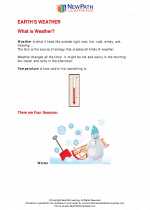
 Worksheet/Answer key
Worksheet/Answer key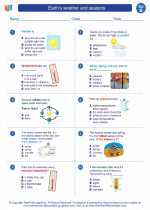
 Worksheet/Answer key
Worksheet/Answer key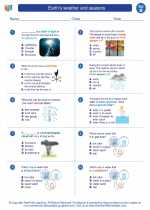
 Worksheet/Answer key
Worksheet/Answer key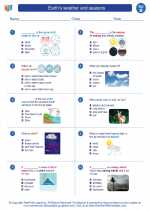
 Worksheet/Answer key
Worksheet/Answer key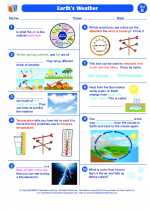
 Vocabulary/Answer key
Vocabulary/Answer key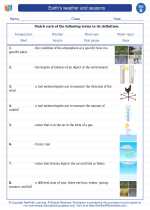
 Vocabulary/Answer key
Vocabulary/Answer key